DIMORPHOTHECA
Dimorphotheca
Moench, Methodus 585. 1794; Strother, Fl. North Amer. @ eFloras.org 19-21: 380.
Annuals, perennials; shrubs or subshrubs; 5-40(150+) cm. Stems procumbent to erect, glabrous or arachnose to pilose-hirtellous and/or stipitate-glandular. Leaves +/- sessile or petiolate; leaf blades oblong or oblanceolate to linear, margins entire or dentate or pinnately lobed, faces sparsely arachnose and/ or stipitate-glandular. Capitula solitary, radiate. Involucres campanulate to hemispheric or broader, 5-20+ mm diameter. Phyllaries 15-21 in 2(-3) series, lanceolate to linear-lanceolate. Receptacles flat to conic. Ray florets 10-21+ in 1(-2) series. Corolla usually yellow to orange or white, sometimes purplish abaxially and/ or at base or apices, limb oblong-elliptic to oblanceolate. Disc florets 15-50+, bisexual, all or mostly fertile (inner sometimes functionally staminate). Corollas whitish or yellow, red or purplish; tubes much shorter than +/- campanulate throats (lobes sometimes with terete or dilated appendages). Cypselae (ray) triquetrous-prismatic to clavate, +/- tuberculate or ridged; (disc) compressed, often winged +/- smooth.
19 species
Dimorphotheca pluvialis
Dimorphotheca pluvialis
(L.) Moench, Methodus 585. 1794; Strother, Fl. North Amer. @ eFloras.org 19-21: 381; Calendula pluvialis L., Sp. Pl. 2: 921. 1753.
Annuals, 5-20(-40+) cm; stem procumbent to erect, glabrous. Leaves +/- sessile, alternate; leaf blades narrowly oblong or oblanceolate to linear, 15-50(-70) mm x 3-15 mm, margins usually remotely dentate, sometimes entire, base narrow petiole-like; both faces stipitate glandular and with short spinous growth. Capitula radiate, ca. 6 cm across, white above, purple below, solitary on peduncle. Peduncles 5-12 cm (up to 17 cm long), naked or with few linear leaves, surface with short spinous growth. Involucre campanulate, 1.5 cm long, ca. 20 mm diameter. Phyllaries +/-15, in 2-series, connate at base, lanceolate to linear-lanceolate, margin scarious, hairy. Receptacle epaleate. Ray florets: 15-16, female, fertile, in one series. Corolla tube short, 2 mm long, white densely hairy; limb 20-30+ mm long, adaxially white, often blue or purplish at base and/ or apices and abaxially purple. Ovary ca. 2 mm long; style branched at apex, dark purple. Disc florets: 30-50+, bisexual, tubular or +/- campanulate, ca. 7 mm long. Corolla ca. 4.5 mm long, pink or purplish; tube hairy and much shorter than tubular-funnelform throat above, 5-lobed, lobes 1.5-2.0 mm long, acute, terete or dilated, sparsely hairy outside. Anther tube ca. 2.7 mm long; style undivided, capitate. Cypselae of 2 types: Ray cypselae triquetrous-prismatic to terete, clavate, +/- tuberculate or ridged or wrinkled, 6-8 mm long; Disc cypselae compressed, often winged, +/- smooth, 4-6 mm long.
Common Names: White African Daisy, Cape Marigold, Weather Prophet, Cape Rain- Daisy, Rain Daisy
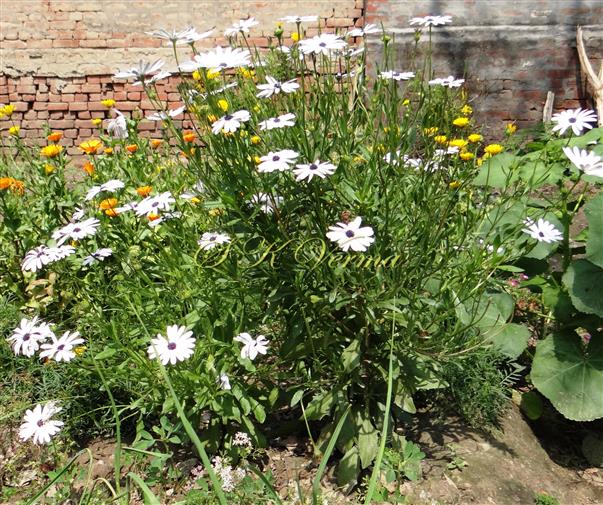
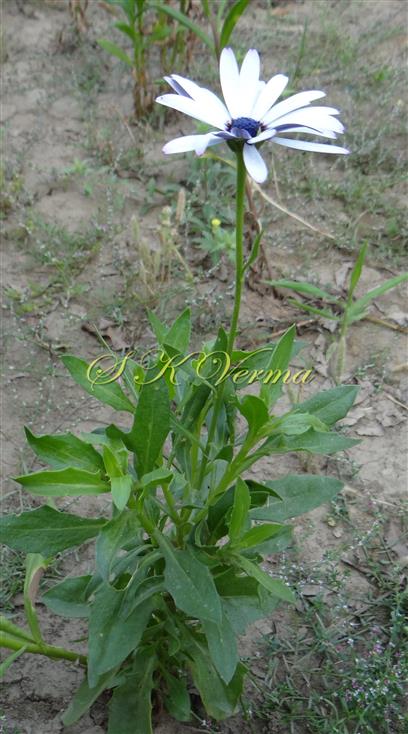
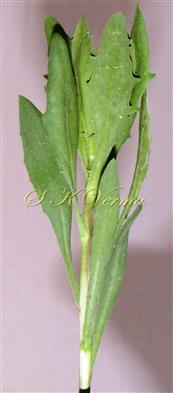
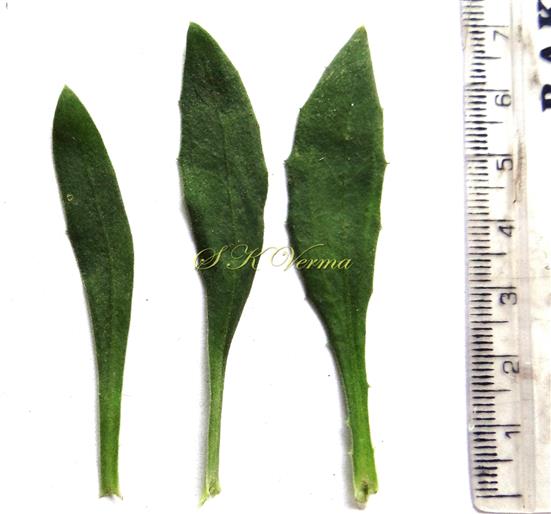

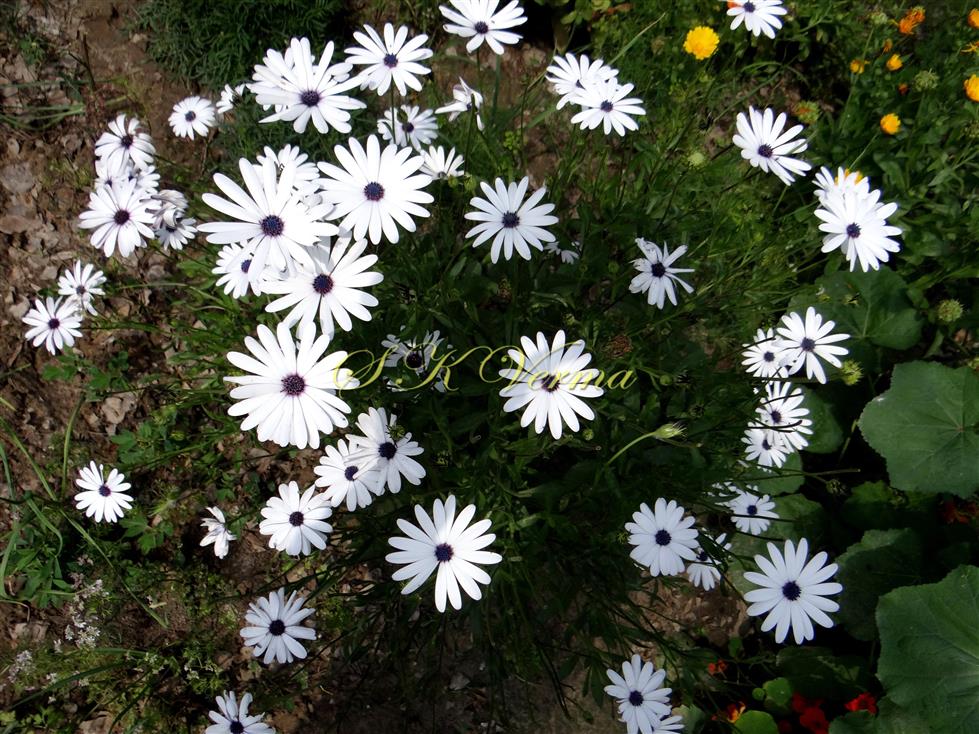
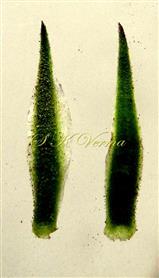
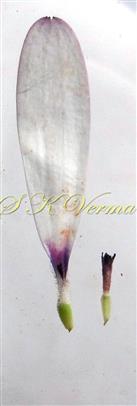
 and Disc Florets-DSC04714.jpg)
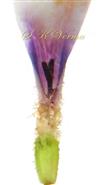
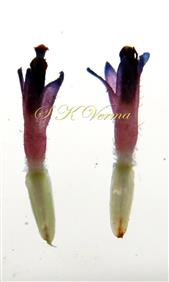
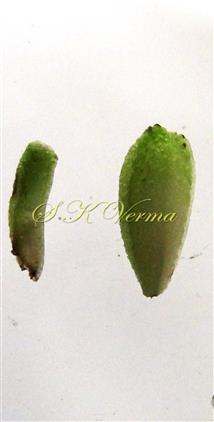
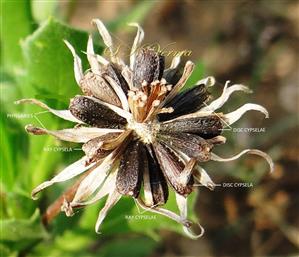





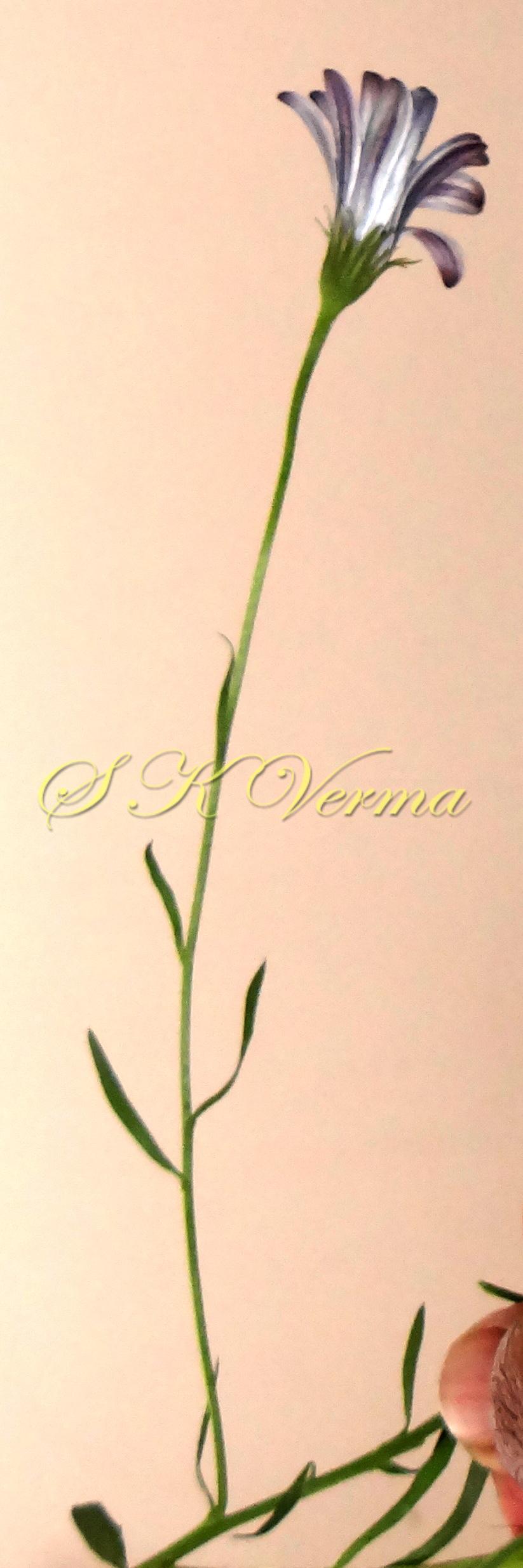



 and Disc Florets-DSC04714.jpg)



